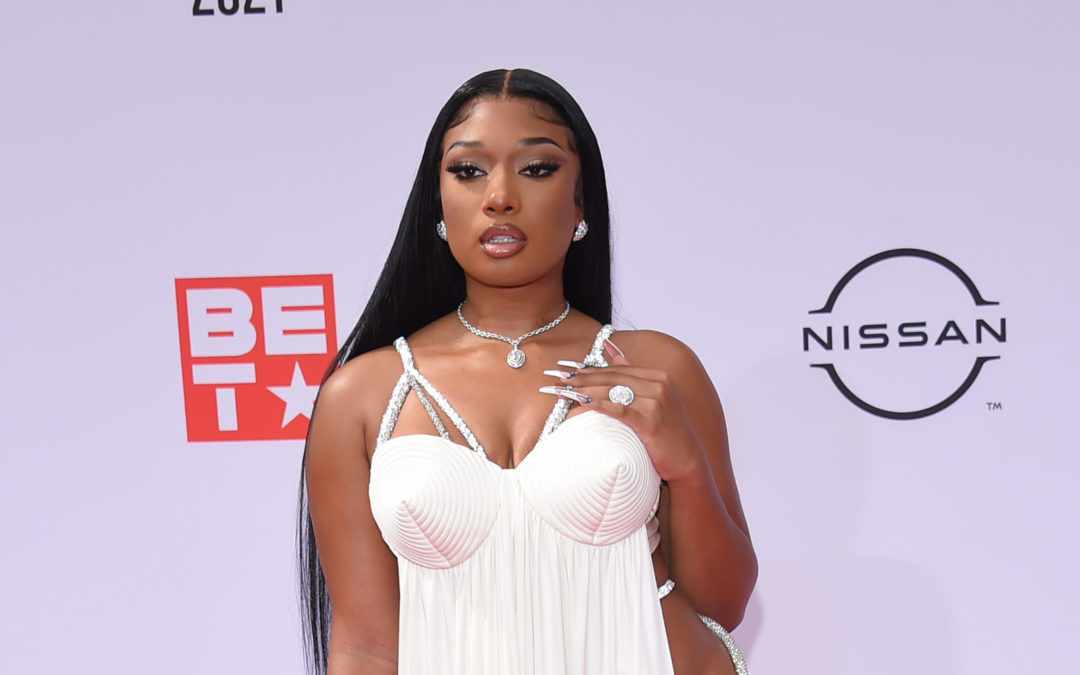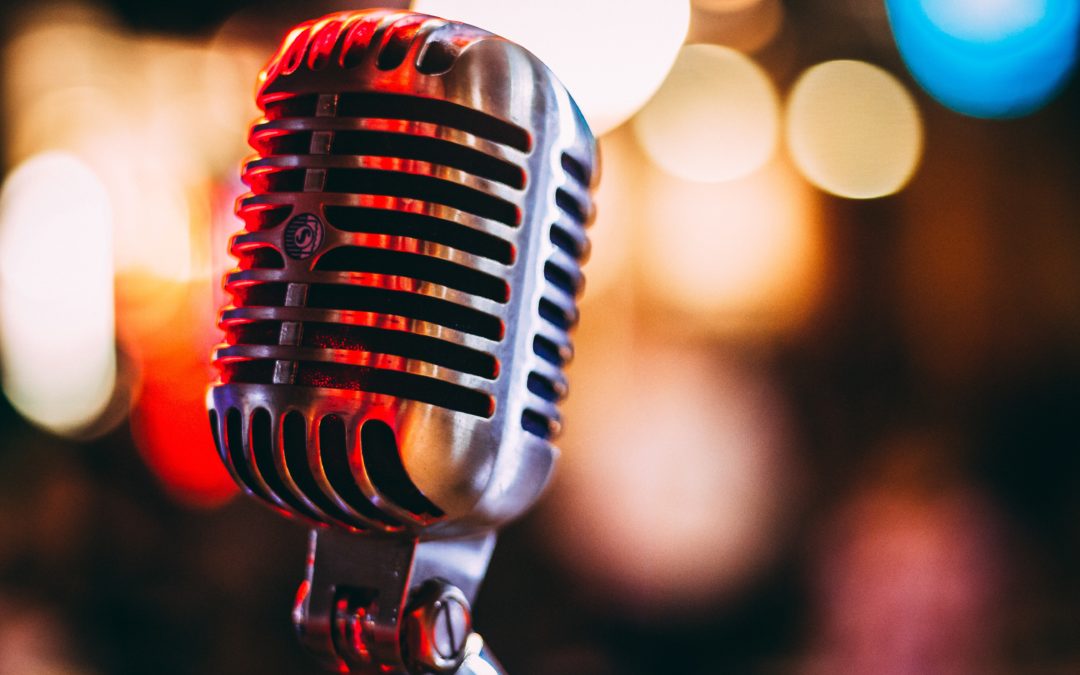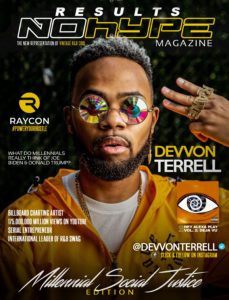
by Jonathan P-Wright | Nov 13, 2023 | Latest, Music News |
After an incarceration period of nearly six years, Ralo, the celebrated artist, makes a stunning return to the music industry. His release from prison and his subsequent comeback have stirred waves in the music scene, marking a momentous milestone in the rapper’s life and career.
Ralo’s Prison Release: A Close Look at the Journey
Ralo’s journey from his prison cell to freedom has been a long and challenging one. Originally sentenced to eight years in prison in June 2020, he was expected to complete his sentence by late 2023, according to a statement shared on his Instagram account.
However, Ralo’s release came sooner than expected. His release was confirmed by the footage that started circulating on social media, showing that Ralo had indeed been released from custody.
The Arrest and the Aftermath
Ralo’s arrest in 2018 was a result of accusations of trafficking weed from California to Georgia. Despite the charges and the subsequent prison sentence, he remained resilient and focused on his personal growth.
In a statement to Complex, Ralo accepted responsibility for his actions and expressed his readiness to move on with his life. His time in prison allowed him to renew himself, mature, and discover better aspects of life. Ralo’s music career has been a significant part of his journey. Despite the challenges he faced, his passion for music remained unwavering. His most recent full-length studio release was the album “97 Months,” which was released in April.
“First Day Out”: Ralo’s Comeback Single
As promised, Ralo has rolled out the official video for his comeback single “First Day Out.” The video, directed by Vinny P, serves as a celebration of Ralo’s recent release from prison. It is a testament to Ralo’s unwavering spirit and a symbol of his triumphant return to the music scene. In a statement, Ralo reflected on being behind bars for nearly six years and expressed gratitude for his accomplishments in music, as well as for what’s still to come.
Looking Forward: Ralo’s Future in Music
Now, Ralo is back in the music scene and signed to 300 Entertainment. With the challenging phase of his life behind him, Ralo is looking forward to continuing his music career and sharing his experiences and growth with his fans through his music.
Ralo’s release from prison and his subsequent comeback in the music industry is a story of resilience, personal growth, and the power of music. His journey serves as an inspiration to many, proving that despite the challenges and setbacks life throws at us, with determination and passion, we can always make a triumphant return.

by Jonathan P-Wright | Nov 9, 2023 | Latest, Music News |
Image credit: Christian Bertrand / Shutterstock.com
From his impeccable three-part run of Top 10 hit “Us Against The World” to the Parisian-themed “J’adore”, South London rapper Strandz has been carefully crafting his next moves. His innovative approach has led to the creation of his new single, “Feeling Alive” with Lancey Foux. Let’s dive into the journey of Strandz and the creation of his latest musical piece.
Strandz’s Journey
Strandz, a South London rapper, has been making waves in the music industry. After his impressive series of hits including “Us Against The World”, its remix with Digga D, and “J’adore”, he spent several months strategizing his next steps. His recent actions are a testament to his meticulous planning.
The Collaboration: Strandz and Lancey Foux
Pairing up with fellow artist Lancey Foux, Strandz presents his new single, “Feeling Alive”. Lancey’s contribution to the track offers a unique twist, enhancing the overall impact of the song.
Production Team
The song is a product of a collaborative effort between Blueboy, Tn, and Strandz himself. Their combined skills have resulted in a captivating track that resonates with listeners, marking another success in Strandz’s career.
The 2023 Take on 2000s Rap Sound
“Feeling Alive” is a perfect blend of the 2000s rap sound and contemporary music trends, resulting in a unique sound that sets Strandz apart. This fusion of styles demonstrates his ability to innovate and adapt, further solidifying his position in the music industry.
The Message Behind “Feeling Alive”
In “Feeling Alive”, Strandz explores the concept of appreciating the small yet beautiful moments in life. He encourages listeners to cherish these moments, emphasizing their significance in our individual journeys.
Lancey Foux’s Perspective
Lancey Foux provides a fresh perspective on the song’s theme, adding depth to the overall narrative. His interpretation of what it means to feel alive enriches the song, offering listeners a multifaceted experience.
Audience Reception
Since its release, “Feeling Alive” has received positive feedback from listeners. The song’s unique sound and profound message have resonated with audiences, making it a popular addition to playlists.
The Impact of “Feeling Alive”
“Feeling Alive” marks a significant milestone in Strandz’s career. The song’s success demonstrates his ability to create relatable content while maintaining his distinctive sound, further solidifying his position as a prominent figure in the music industry.
What’s Next for Strandz?
With the success of “Feeling Alive”, Strandz has set a high bar for himself. However, his consistent drive for innovation and passion for music suggest that he will continue to push boundaries and create music that resonates with audiences.
Conclusion
Strandz’s journey in the music industry has been marked by innovation and a unique approach to music production. His latest single, “Feeling Alive”, is a testament to his ability to create captivating music that resonates with listeners. With his continued dedication and passion for music, Strandz is set to make a lasting impact in the music industry.

by Laghe Andrews | Oct 30, 2023 | Latest, Music News, New Music Alert |
Image credit: DFree / Shutterstock.com
Music industry news is often filled with tales of artists who have come to the end of their professional relationships with their record labels. The latest tale involves popular rapper, Megan Thee Stallion, and her record label, 1501 Certified Entertainment. After a long-standing legal battle, the two parties have now decided to “amicably part ways.”
Breaking the Shackles: The Legal Battle
Megan and 1501 have been regular features in music news, primarily due to their protracted and contentious legal tussle. The contention arose when Megan’s 2021 release, Something for Thee Hotties, was not officially recognized as an “album” under her contract agreement with 1501.
This led to a lawsuit filed by Megan against the record label, signaling a rocky phase in the professional relationship between the artist and the label.
The Settlement: A New Beginning
“A confidential settlement has been reached,” a 1501 spokesperson told Rolling Stone.
This statement marked the end of a saga that has been partially played out in the press since 2020. With this settlement, both parties have decided to part ways amicably and turn their focus towards the next chapter of their respective careers.
The Future: Independence for Megan Thee Stallion
During an Instagram Live session, Megan gave her fans a glimpse into her future plans without 1501.
This signifies a significant shift in her career trajectory as it will be the first time she will operate as a fully independent artist since her early days in the industry.
The Last Hurrah: Traumazine
Megan’s most recent album, Traumazine, which was released in August of last year, now stands as the final Megan release under the 1501 banner. The album, along with her latest single, “Bongos” (a collaboration with Cardi B following the hit “WAP”), was released through Atlantic.
Conclusion
The separation of Megan Thee Stallion from 1501 Certified Entertainment marks a significant milestone in her career, signifying a new era of independence. As she embarks on this new journey, it will be interesting to see what the future holds for this talented artist and how she navigates the music industry as an independent entity.
For 1501 Certified Entertainment, the departure of Megan Thee Stallion signals a time for reflection and a chance to review its strategies and relationships with its artists.
Only time will tell how these changes will impact the respective parties and the music industry as a whole.

by Jonathan P-Wright | Oct 26, 2023 | Latest, Music News |
Photo by israel palacio on Unsplash
The landscape of hip-hop has evolved significantly in recent years, with the emergence of new artists and the rise of streaming platforms. However, according to rapper Bow Wow, there is a concerning trend of record labels putting out “subpar ass artists” who lack the necessary skills and knowledge to navigate the industry successfully. In this article, we will explore the importance of artist development in the music industry and why it is crucial for record labels to invest more time and resources in nurturing talent.
The Current State of Hip-Hop
Bow Wow, also known as Bow Weezy, recently expressed his frustration on social media regarding the lack of artist development in the music industry. He believes that record labels are too quick to sign and promote artists who may not be ready for the challenges of the industry. In his tweet, he highlighted the importance of bringing back artist development programs at these labels to ensure that artists receive the necessary training and guidance.
The Role of Record Labels
Record labels play a significant role in shaping the careers of artists. They have the resources and expertise to provide artists with the necessary tools and opportunities to succeed in the highly competitive music industry. However, in recent years, there has been a shift towards signing artists based on their viral success or social media following, rather than their artistic abilities or potential for growth.
The Need for Artist Development
Artist development programs are designed to help artists refine their skills, develop their unique sound, and navigate the complexities of the music industry. These programs provide artists with the knowledge and tools they need to succeed, both creatively and professionally. By investing in artist development, record labels can ensure that the artists they sign are prepared for the challenges they will face and have the potential to create lasting, impactful music.
The landscape of hip-hop has evolved significantly in recent years, with the emergence of new artists and the rise of streaming platforms. However, according to rapper Bow Wow, there is a concerning trend of record labels putting out “subpar ass artists” who lack the necessary skills and knowledge to navigate the industry successfully. In this article, we will explore the importance of artist development in the music industry and why it is crucial for record labels to invest more time and resources in nurturing talent.
The Current State of Hip-Hop
Bow Wow, also known as Bow Weezy, recently expressed his frustration on social media regarding the lack of artist development in the music industry. He believes that record labels are too quick to sign and promote artists who may not be ready for the challenges of the industry. In his tweet, he highlighted the importance of bringing back artist development programs at these labels to ensure that artists receive the necessary training and guidance.
The Role of Record Labels
Record labels play a significant role in shaping the careers of artists. They have the resources and expertise to provide artists with the necessary tools and opportunities to succeed in the highly competitive music industry. However, in recent years, there has been a shift towards signing artists based on their viral success or social media following, rather than their artistic abilities or potential for growth.
The Need for Artist Development
Artist development programs are designed to help artists refine their skills, develop their unique sound, and navigate the complexities of the music industry. These programs provide artists with the knowledge and tools they need to succeed, both creatively and professionally. By investing in artist development, record labels can ensure that the artists they sign are prepared for the challenges they will face and have the potential to create lasting, impactful music.
There have been numerous success stories in the music industry that highlight the importance of artist development. Artists like Symba, Westside Boogie, Lady London, and Lola are just a few examples of talented artists who have benefited from proper artist development. These artists have honed their craft, developed their own unique styles, and gained recognition for their talent.
The Future of Hip-Hop
Bow Wow’s call for record labels to prioritize artist development reflects a growing sentiment within the industry. There is a need for change and a return to nurturing talent, rather than focusing solely on short-term gains. As the music industry continues to evolve, it is essential for record labels to invest in the future of hip-hop by supporting and developing emerging artists.
Conclusion
Artist development plays a vital role in the success and longevity of artists in the music industry. By providing artists with the necessary training, guidance, and resources, record labels can ensure that they are nurturing talent and creating opportunities for artists to thrive. The future of hip-hop depends on a return to artist development, where artists can grow, evolve, and create music that resonates with audiences for years to come.

by Fabiola Noel | Oct 25, 2023 | Latest, Music News |
Photo by Nainoa Shizuru on Unsplash
Hype Williams, a prodigious music video director, is a name that reverberates throughout the music world. His groundbreaking vision has shaped the music videos of some of the most influential artists in the industry, such as Jay-Z, Missy Elliott, and DJ Khaled. This article delves into the stories behind Williams’ impactful work, exploring the collaborative efforts and creative processes that have marked his legendary career.
The Team Behind the Vision
The indelible visuals that Williams has been known for over the past three decades were not the work of a single individual. Williams, despite his grandiose ideas and pioneering vision, required a team to transform his concepts into reality. His collaborative endeavors involved working closely with various creatives, including June Ambrose, an imaginative costume designer, Malik Hassan Sayeed, a talented cinematographer, and Connie Orlando, a dedicated producer, among others.
Artists such as Jay-Z, Missy Elliott, Kelis, and DJ Khaled, placed their trust in Williams, faithfully following his direction. This collaborative approach was critical in producing 2-3 music videos a month at the peak of Williams’ career.
Jay-Z: From “Can’t Knock The Hustle” to “Big Pimpin”
Jay-Z’s collaboration with Williams began in 1996 with the music video “Can’t Knock The Hustle”. The video’s cinematic feel was amplified by the stunning cinematography of Malik Hassan Sayeed. The grandeur of the visuals and Williams’ unique eye for detail elevated the video to a whole new level.
The duo’s groundbreaking collaboration continued with “Sunshine” in 1997, and “Big Pimpin” in 2000. “Big Pimpin” marked their first high-budget video. Williams’ direction and vision for the video were instrumental in pushing the album sales from one million to four million.
Missy Elliot: The Magic of “The Rain” and “She’s a Bitch”
Williams’ collaboration with Missy Elliot led to the creation of visually stunning music videos like “The Rain” and “She’s a Bitch”. Williams’ innovative ideas, coupled with Elliot’s risk-taking attitude, resulted in captivating and futuristic music videos.
For “She’s a Bitch”, Williams suggested the bold idea of Elliot sporting a bald head. This idea, along with Elliot’s futuristic wardrobe and make-up, made the video a masterpiece. These visuals have become iconic in the music industry, proving to be a work of art set to inspire future generations.
The Costuming Genius of June Ambrose
June Ambrose, the costume designer behind some of Williams’ most iconic videos, played a crucial role in bringing his visions to life. Ambrose designed the costumes for videos such as “Mo Money Mo Problems” and “The Rain”. Her ability to create custom, out-of-the-box costumes on short notice was instrumental in setting the tone and visual impact of these videos.
Fatima Robinson: Choreographing the Moves
Fatima Robinson, the choreographer for videos like “Rock The Boat” and “Put Your Hands Where My Eyes Can See“, was instrumental in bringing Williams’ vision to life. Her choreography, combined with Williams’ innovative direction, resulted in music videos unlike any seen before.
Margo Wainwright: Making Iconic Videos a Reality
Margo Wainwright, the former video commissioner at Def Jam, worked closely with Williams to produce iconic videos for Def Jam artists. Despite the astronomical budgets associated with Williams’ videos, the results were always worth the investment. Videos such as “Big Pimpin” and “Hate Me Now” were game-changers in the music industry, becoming iconic symbols of the culture.
Hype’s Legacy: Beyond Music News
The impact of Williams’ work extends beyond music news and the music industry. His innovative direction and groundbreaking vision have inspired countless artists and filmmakers. His contribution to the representation of Black culture in media is unparalleled. His work has set the bar high for music video directors, challenging them to think outside the box and push the boundaries of creativity.
Williams’ legacy continues to inspire new generations of artists, filmmakers, and music video directors. He has paved the way for creative expression in the music industry, proving that with a bold vision and a talented team, anything is possible. So, here’s to Hype Williams, the man who showed the world what Black opulence looks like and continues to shape the visual landscape of the music industry.








RECENT COMMENTS